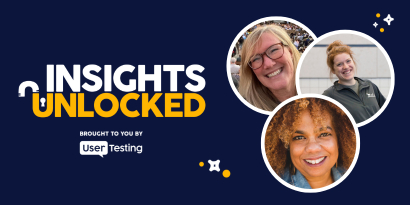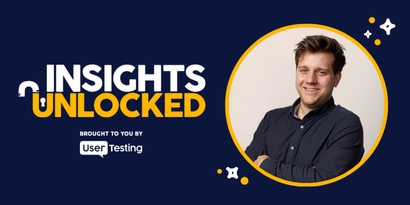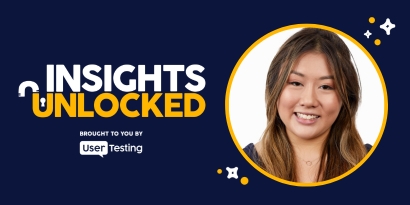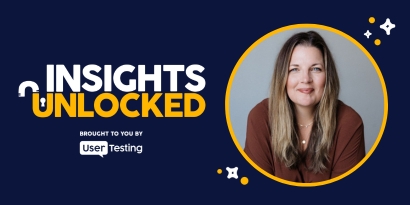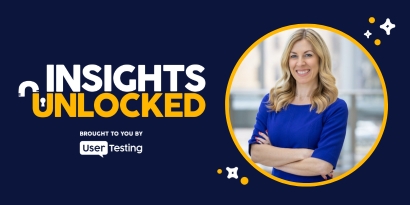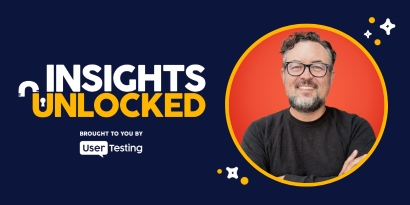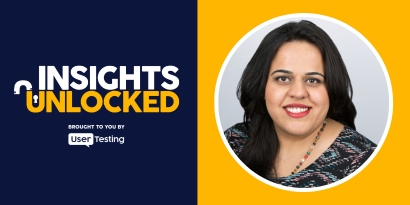
Episode 27 | December 27, 2021
The flywheel of customer feedback
Discover how micro testing and customer feedback drive innovation, alignment, and empathy in this season 3 recap of Insights Unlocked.
Why listening matters: Turning customer feedback into powerful insights
What if the biggest opportunity your business has been missing isn’t a product feature, a marketing tactic, or a new growth hack—but a conversation with your customer?
In this special season three recap of Insights Unlocked, we reflect on the most powerful lessons learned from the past 27 episodes. One message echoes loudly through every guest interview and story shared: customer feedback is not just useful—it’s essential.
By embracing human insight, organizations can align teams, prioritize what matters most, and drive innovation with clarity and empathy.
The voice of the customer isn’t a nice-to-have—it’s a must-have
From product design to marketing campaigns, making customer-centric decisions begins with truly understanding your audience. And that means moving beyond surface-level analytics.
As Andy MacMillan noted, “So many guests this season converged on the same theme: listening to customers. Not just looking at data, but really connecting with people and understanding their experiences.”
Listening actively to customer feedback helps businesses:
- Prioritize product features based on real needs
- Identify pain points in user journeys
- Align cross-functional teams around shared goals
- Build trust by showing customers they’re heard
And perhaps most importantly, customer insight serves as a compass for decision-making in a constantly evolving market.
"We’re changing, our competitors are changing, and our buyers are changing. So naturally, our positioning has to evolve." – April Dunford
Small questions, big impact: The rise of micro testing
One of the key themes highlighted was the shift toward micro testing—a nimble, real-time approach to user research that emphasizes speed and actionability over drawn-out studies.
Andrew from Health Catalyst captured this perfectly:
“We get the most bang for our buck focusing on micro testing instead of big longitudinal benchmark studies.”
Micro testing empowers teams to quickly validate assumptions, improve usability, and iterate rapidly. It's a strategy rooted in continuous learning and one that reinforces a customer-first strategy.
Janelle Estes explained the beauty of it simply:
“When you have a small question, just go out and ask a handful of people, get their reaction, be informed, and move on to your next challenge.”
Building the customer feedback flywheel
Customer-centric companies don’t just listen once—they make it a habit. That’s where the concept of a feedback flywheel comes in.
Emily, a VP of Marketing at Ispr, described how creating a rhythm of feedback transformed her team’s mindset:
“If you get this right, you create a flywheel. Once you start, you don’t want to stop. It becomes something you just do.”
By embedding real-time user feedback into their workflows, teams can:
- Reduce the risk of costly product missteps
- Drive customer loyalty through better experiences
- Uncover emerging trends faster than competitors
“When customer feedback is part of your team’s intuition, it changes everything.”
Not all customers are created equal
Another highlight from the season was April Dunford’s powerful insight on identifying best-fit customers. She emphasized that not every customer provides the same value—or the same kind of insight.
“Sometimes what I’ve got is bad data. I’m mixing up good-fit customers with bad-fit customers.”
Understanding who your best-fit customers are helps sharpen your market positioning, shape your customer experience strategy, and avoid noisy data that can lead teams astray.
April shared a story about cleaning up messy survey data by filtering out customers who weren’t representative of their ideal user. The moment she did, patterns emerged clearly—and positioning decisions became obvious.
ON-DEMAND WEBINAR
Unlock higher conversions: understanding what users really want
In this webinar, you'll learn:
- How to identify hidden friction points that are preventing conversions
- Why traditional analytics fall short—and how customer insights fill the gap
- Actionable strategies to refine navigation, optimize CTAs, and enhance the user journey
Diversity of perspective fuels better product decisions
The episode also tackled a common pitfall: relying on one person—or one team—to be the voice of the customer.
As Janelle said, “When one person is the voice of the customer, it’s a trump card. Others lose their ability to bring important perspectives to the table.”
Bringing multiple stakeholders into the user research process ensures a more complete picture. Engineers hear different things than marketers. Designers notice different friction points than sales reps. And that diversity creates better solutions.
Teresa Torres, author of Continuous Discovery Habits, introduced the idea of collaborative synthesis, where teams come together after each customer interview to align on what was heard and how to act on it. Visual tools like opportunity maps and storyboards make it easier to digest, share, and apply insights.
Trust and transparency in the age of data overload
With so much customer data available today, it’s easy to get lost in the numbers. But without transparency, companies risk eroding trust.
Brant, one of the season’s guests, issued a stark reminder:
“The more digital things get, the more trackable they are—and the easier it is to use that data in ways customers didn’t sign up for.”
Rather than relying solely on behavioral analytics, companies need to balance what they track with what they ask. Human conversations provide the nuance that data points often lack.
Trust grows when customers see that their feedback influences real changes—whether it’s a smoother onboarding experience, a more intuitive checkout process, or a clearer login flow.
“Sometimes all it takes is watching one customer struggle to spark real change in an organization.”
Feedback is a team sport
Many guests echoed the sentiment that great customer experience doesn’t happen in a silo. The best results come when product managers, UX designers, marketers, and support teams work together to surface insights and drive action.
This requires creating shared visibility and alignment. As noted:
“We all got the same feedback, but it sounds like we all heard different things. That’s when you need to double down on alignment.”
Tools like interview snapshots, opportunity trees, and feedback dashboards can bring everyone onto the same page. These frameworks help translate the voice of the customer into prioritized decisions and roadmaps.
Making it stick: Creating a customer-first culture
Building a customer-centric culture isn’t about a single initiative—it’s about changing habits across the organization.
UserTesting’s upcoming book, previewed in the episode, dives deeper into this. The book shares over 20 real-world stories from brands like HelloFresh, Microsoft, and Crikey, offering actionable playbooks tailored for product teams, marketers, and researchers.
“It’s not just about the data. It’s about the people. When we plan season four, we’re highlighting customer stories to show what’s possible when you truly listen.”
Conclusion: It starts with listening
At the heart of all these themes—micro testing, collaborative discovery, best-fit customers, and continuous feedback loops—is one powerful truth: if you want to build better products and create more meaningful experiences, you have to listen.
“The companies who win are the ones who care enough to ask, and take the time to listen.”
